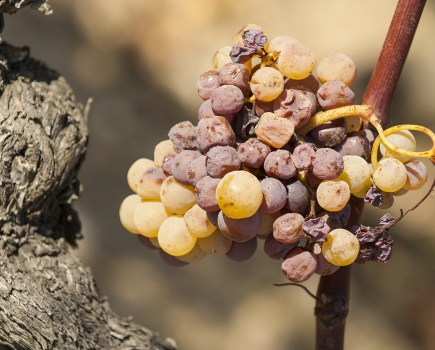The quieter winter period is an ideal time to take stock of vineyards and prepare for the coming season. Hutchinsons agronomists Rob Saunders and Chris Cooper highlight five priority areas.
1. Sample soil
Soil sampling should typically be on a three-year cycle, and in England, if applying any type of fertiliser, legally needs to be done every five years. More frequent testing may be needed in problem areas. Terramap is an excellent way of monitoring nutrient levels over time, using multi-point sampling and the ability to return to the same spot each time.
Alongside key considerations like phosphate, potash, magnesium, pH and lime requirements, be aware of potential manganese deficiencies too. Historically, many vines received small quantities of manganese contained in applications of mancozeb-based fungicides. However, this is no longer available as the EU withdrew the active in February 2021. Subsequently, no approved product is available in the UK, where this is still legal to use, so deficiencies are likely.
2. Plan pruning
Deciding when to begin pruning is a compromise between what is ideal and what is practical, depending on vineyard area and labour availability. Ideally, prune closer to spring when rising sap is thought to protect the wound against infection, and there is less time for trunk diseases to develop.
Later pruning helps mitigate frost damage, as tall, upright canes are less affected by ground frost. There is also more material to select from if frost damage does occur before pruning.
Realistically though, only smaller sites, or those with plentiful labour, can leave pruning until later, and anyone reliant on contractors may have little flexibility over timing, although tying down can be delayed.
Whenever pruning starts, try to avoid wet days which increase infection risk on cuts – dry, cold conditions are ideal.
3. Appraise canes
A critical appraisal of cane growth helps identify those most suitable to lay down for the coming season and can also highlight problem areas requiring attention.
Ideally most canes should be a reasonable diameter (pencil thick) and have reached the top wire during the year. Cut out any “bull-canes” which will be too vigorous and unbalance the growth in 2022. Examine any that fall short of the top-wire to identify the causes. Lack of nutrition, poor soil structure and issues such as compaction or poor drainage, are common causes.
Growing conditions and moisture availability were generally very good last season, so this is unlikely to have affected nutrient uptake.
It may be worth conducting a soil mineral nitrogen (SMN) test in the New Year on areas of poor vigour as nitrogen is key to promoting strong foliar growth. Given high fertiliser prices, there is extra need to accurately target applications, both to compensate for 2021 crop uptake and meet nutritional requirements for the coming season.
If the vine has wispy cane development due to cropping well, be realistic about what the cane can support next year and reduce the number of fruiting buds correspondingly.
4. Manage weeds
Maintaining clear ground under vines is a method of reducing spring frost risk damage, but bare earth during winter is bad for soil health, given the reduction in carbohydrate available for soil biota, increased nutrient leaching, run-off and erosion risk.
Allowing soil to “green up” with some weed growth can help, by providing useful ground cover and root growth. Generally, aim to remove weed cover in late winter/early spring to reduce the frost risk affecting emerging buds in late April to early May
Small weed populations are relatively easy to control with a single application of glyphosate in March or propyzamide (if available) in late January, however spray application shadow where there is dense weed cover makes full control difficult if weeds are well established. In these situations a programmed approach will be needed. This usually involves one treatment in mid-late winter to reduce the weeds to a level that can be effectively controlled with a second spray in March.
Using different actives at each timing is important for resistance management, but this is becoming harder given limited herbicide chemistry approved in vines. Many growers are therefore exploring other options such as mulches, flame-weeding, water weeders, cultivations and cover crops.
5. Maintain sites
Now is a good time to catch up with basic site maintenance, such as repairing trelliswork, maintaining drainage, trimming around boundaries and clearing cold air channels through hedges.
While there were relatively few frost problems in 2021, the year before showed how damaging late frosts in May can be, so investing a bit of effort now to reduce the risks could be worthwhile.
Finally we, and the Hutchinsons team, would like to wish all readers a happy, prosperous New Year.



